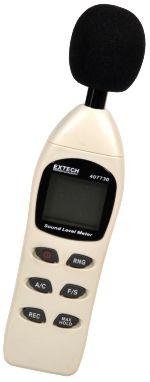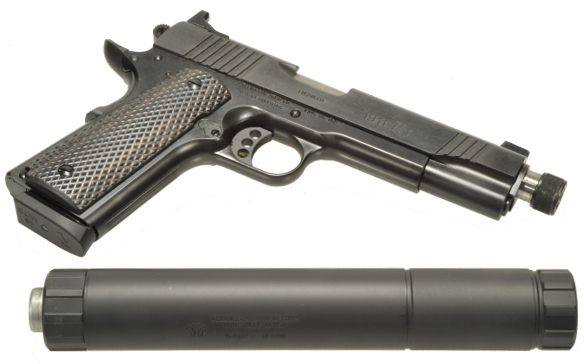
Silencer or suppressor? Maxim’s patent is for a “silent firearm”, the patent abstract refers only to a “silencer”. All marketing of Maxim’s 2,400 product models refers to “silencers”. Derivative patents 1910 and forward fall under the U.S. Patent office classification “silencer”. The ATF, within the context of the Gun Control Act, uses “silencer” as the proper nomenclature and virtually every manufacturer marketing to civilians refer to their products as “silencers”.
Military nomenclature is not name determination, video games do not make that determination, guys who conduct pretend war training do not make that determination, and pretentious second year engineering students do not make that determination. Silencers suppress sound. That is what they do, not what they are… which is why airplanes are not called flyers and why Ferraris are not called “Transportations”.
Ratings for silencers are like ratings for ear protectors; they reflect the degree of dB level reduction the product provides. In the case of the Ti-Rant; -30 dB dry. -41dB wet. Rather than regurgitate specifications from Advanced Armament Corp’s collateral material, or wait for responses from a reluctant product support group, I thought it might be interesting to apply some method of quantification of the silencer’s performance, even if unsophisticated. Some foundation…
Catching a greased pig…
Silencers decrease noise, i.e. objectionable levels of sound. Sound is created by air pressure variations within ambient air that form waves of differing amplitudes and frequencies. These types of waves cause our eardrums to vibrate, a vibration our brain interprets as sound. A decrease or increase in wave amplitude is perceived, respectively as sound growing softer or louder. Duration of a pressure wave is defined as frequency.
A human ear in good working, and attached to a proper host, can hear frequencies beyond a range of 20Hz to 20 kHz. Elephants communicate constantly, but predominately silently to the human ear by vocalizing in the 12Hz to 13Hz range. Our range of hearing is not linear in sensitivity, the most sensitive frequencies being the 5th, 6th, 7th, and 8th octave bands; 320Hz, 640Hz, 1280Hz, 2560Hz. Sound levels are typically expressed in decibels. When filtered to reflect a typical range of human hearing the result is expressed as dBA.
There is another consideration of consequence when it comes to knocking 30 dB to 40 dB off the top of a noise source. dB intensity is measured on a logarithmic scale; sound at 70 dB has 10 times the intensity of 60 dB, while sound at 80 dB is 100 times greater than 60 dB. It then follows, something that can knock 30 dB to 40 dB off the top of a 45 Auto that creates approximately 157 dB at its muzzle is a major gift to hearing.
Sound intensity is not the same as the more subjective, psychological perception of loudness where 70 dB is only twice as loud as 60 dB and 80 dB is only 4 times as loud as 60 dB. However, it is intensity, not loudness that is destructive to hearing, so while the use of a silencer may not result in perceived… silence, the degree of sound intensity reduction resulting from the use of the T-Rant 45M is substantial in loudness reduction and monumental for hearing wellness.
You can check for yourself with a $76 sound meter! … Not really

Pictured left is a $76 Extech 40-to-130-Decibel Digital Sound Level Meter. It is inexpensive, it is not a certified, but it does meter with A or C filtering and with ± 2cB accuracy. Unfortunately it lacks the sampling speed and frequency bandwidth to provide truly accurate measurement.
Sound level meters tend to be used for spot readings where a sound can be is anticipated. In situations where the presence of noise is inconsistent and logging is required, a noise dosimeter is often used. A type 1 version of an SLM costs approximately $400 to $600. A type 1 dosimeter with logging capability starts at approximately $2,500.
The problem with all of the above, including the better units noted, is the maximum range of 130 dB to 140 dB, where firearm report typically falls into the 100 dB to 165 dB range. A more specialized meter, like the Larson Davis SoundTrack LXT1-QPR with a 1/4″ microphone for impulsive, high level sound can do the job, but they rents for $760/day.
Sound pressure falls away at an inverse proportion to distance. Assuming a 152 dB level at the source, a meter placed 20 feet away should see approximately 125 dB, a level within the working range of our budget meter. So I began test firing, metering first at the bench, then incrementing outward one foot at a time until, at a distance of ten feet from the bench, the unsilenced 1911 pistol produced readings of 123.6 dB for 230 grain ball ammo and 124.1 dB for Remington 230 grain Home Defense ammo. This suggested a 145 dB level if measured at the muzzle.
Sure, I may have slaughtered the technical terminologies and caused sound engineers… and high school physics students everywhere to cringe, but with the meter placed 10 feet from the discharging 1911 pistol, it could provide some readings relative to configuration changes. Yippy for me!
Conditions examined…
The following table is not being represented as a technical test of the Advanced Armament Corp’s Ti-Rant 45M. It is a more casual attempt at showing relative performance within a group of conditions that happen to be not far off the mark of AAC’s stated performance.
|
Configuration |
Remington 230 Grain |
Δ dB |
Remington 230 Grain |
Δ dB |
| Unsilenced MV FPS | 864 | – | 960 | – |
| Full Silencer MV FPS | 896 | – | 945 | – |
| Unsilenced Dry dB 10′ | 123.6 | – | 124.1 | – |
| Full Silencer Dry dB 10′ | 96.6 | -27.0 | 95.5 | -28.6 |
| Full Silenced Wet dB 10′ | 87.4 | -36.2 | 87.8 | -36.3 |
| Compact Silenced Dry | 103.8 | 19.8 | 104.5 | -19.6 |
|
Compact=forward module removed AAC Dry/Wet Spec -30dB/-41dB |
||||
Proper testing of these environment requires very sophisticates test equipment under very controlled conditions and measurement to a standard set of criteria. So, grain of salt.
Observations…

The Advanced Armament Corp’s Ti-Rant is an effective shooting accessory. In full configuration, it was comfortable shooting without other ear protection. At about the same level as a lawn mower, the shop throughout much of the day, or a noisy restaurant, the noise from a 45 Auto is momentary and not the least bit unpleasant. The sound seems well forward of the firearm and dampened substantially. There is not much of a perceived increase in loudness in compact form.
Adding water or specified types of oil or grease improve the silencers effectiveness by boosting the cooling and compression of gases as they leave the pistol’s barrel. In this case, 5 CCs of water, a bottled water cap full made a noticeable difference and the charge last 40 shots or so. The Ti-Rant 45M manual cautions that silencers can get too hot to touch. In general use, the Ti-Rant never ran too hot to handle.
Recoil seemed dampened with the silencer in place and it was much easier to concentrate on targets. While the Ti-Rant seems large, it is very light and not in the way of sights. The Remington R1 put 5 shots into under 1 3/4″ at 25 yards off the Ransom Rest without the silencer in place. It shot statistically the same with the silencer in place; full, compact, wet or dry. Velocity increased slightly with the silencer in place with ball ammo and decreased slightly with subsonic hollow points. Neither change was significant enough to be of consequence.

Silencers, as a byproduct of function, are not clean running. Ejecta fouling ends up on ammo in magazines, a certain amount burps out of the ejection port and, every now and then, it can be felt on the face as shots are squeezed off. The components of the silencer of course become carbon fouled after extensive shooting, but the silencer comes off and apart without tools and it is easy to disassemble and reassemble. The manual cautions against using ultrasound cleaners and solvents that will harm the aluminum and titanium pieces. A soft nylon brush that will get in nooks and crannies and a little ZEP Orange made short work of cleaning.
The Advanced Armament Ti-Rant 45M is a well made product, worth the paperwork hassle to purchase one and lots of service to be expected.
Advanced Armament Corporation’s Ti-Rant 45M Part 1
Advanced Armament Corporation’s Ti-Rant 45M Part 2

Email Notification